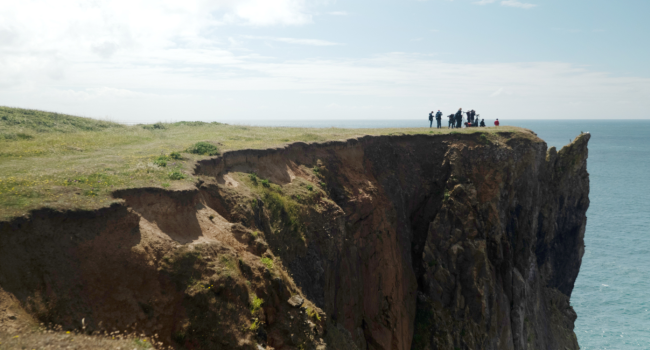The status of the UK’s breeding seabirds: an addendum to the fifth Birds of Conservation Concern in the United Kingdom, Channel Islands and Isle of Man and second IUCN Red List assessment of extinction risk for Great Britain

Author(s): Stanbury, A.J., Burns, F., Aebischer, N.J., Baker, H., Balmer, D., Brown, A.F., Dunn, T., Lindley, P., Murphy, M., Noble, D.G., Owens, R. & Quinn, L.
Published: September 2024
Journal: British Birds Volume: 117
View publicationThe conservation status of breeding seabirds is updated in this paper, with an additional five (Leach’s Storm-petrel, Common Gull, Great Black-backed Gull, Arctic Tern and Great Skua) joining the Birds of Conservation Concern (BoCC) Red List. These species sit alongside Kittiwake, Herring Gull, Roseate Tern, Arctic Skua and Puffin, which were placed on the Red List in previous assessments.
One species, Shag, moves from Red to Amber, while Black Guillemot joins Cormorant on the Green List, having previously been listed as Amber.
The last BoCC assessment for all UK birds was last completed in 2021. However, the status of seabird species included was not updated at that time because survey work for the latest national census, Seabirds Count, was
interrupted by COVID-19. Field work that was due to be completed in 2020 was not finished until 2021, and the results were not published until late 2023.
Since the survey work for Seabirds Count concluded, Highly Pathogenic Avian Influenza has torn through breeding seabird colonies. This is reflected in the latest BoCC update, with Common Tern, which had been set to join the Green List, instead remaining Amber, and Great Skua moving from Amber to Red, following surveys in 2023 that revealed a 76% decline in numbers since the Seabird Count fieldwork was completed.
The results underline the continuing and varied pressures on our internationally important seabird populations.
Abstract
This paper provides updated status assessments for 28 species of current or former breeding seabird in the United Kingdom by way of a two-stage addendum to Birds of Conservation Concern 5: firstly, a pre-H5N1 Highly Pathogenic Avian Influenza (HPAI) baseline and, secondly, an examination of apparent HPAI impacts to date. Two species were classed as former breeders. Of the currently occurring species, ten (38%) were placed on the Red list, 14 (54%) on the Amber list and two (8%) on the Green list. The full UK BoCC list now contains 73 species (30%) on the Red list, 99 (40%) on the Amber list and 73 (30%) on the Green list.
The overall status of seabirds has deteriorated since the last comprehensive UK BoCC assessment in 2015. Leach’s Storm-petrel Hydrobates leucorhous, Common Gull Larus canus, Great Black-backed Gull Larus marinus and Arctic Tern Sterna paradisaea have been added to the Red list owing to pre-HPAI population declines. Great Skua Stercorarius skua has joined the Red list owing to severe HPAI impacts. On a more positive note, European Shag Gulosus aristotelis and Black Guillemot Cepphus grylle have moved from the Red to Amber and Amber to Green lists, respectively.
A two-stage addendum to the second International Union for Conservation of Nature (IUCN) Red List review of extinction risk for breeding seabird species in Great Britain is also presented in this paper. This, too, shows an othe status of seabirds since 2017, with 18 (69%) of 26 regularly occurring breeding seabird species assessed as being threatened with extinction from Great Britain. Updating the full species list reveals that 115 (49%) of 235 regularly occurring species are assessed as threatened with extinction from Great Britain.
The UK remains internationally important for breeding seabirds but many populations are under severe pressure, raising concerns around their resilience. There remains uncertainty regarding the scale of the population-level effects of HPAI on some species. All species will be assessed again in BoCC6 and GB IUCN3, currently scheduled for publication in 2027.








Share this page